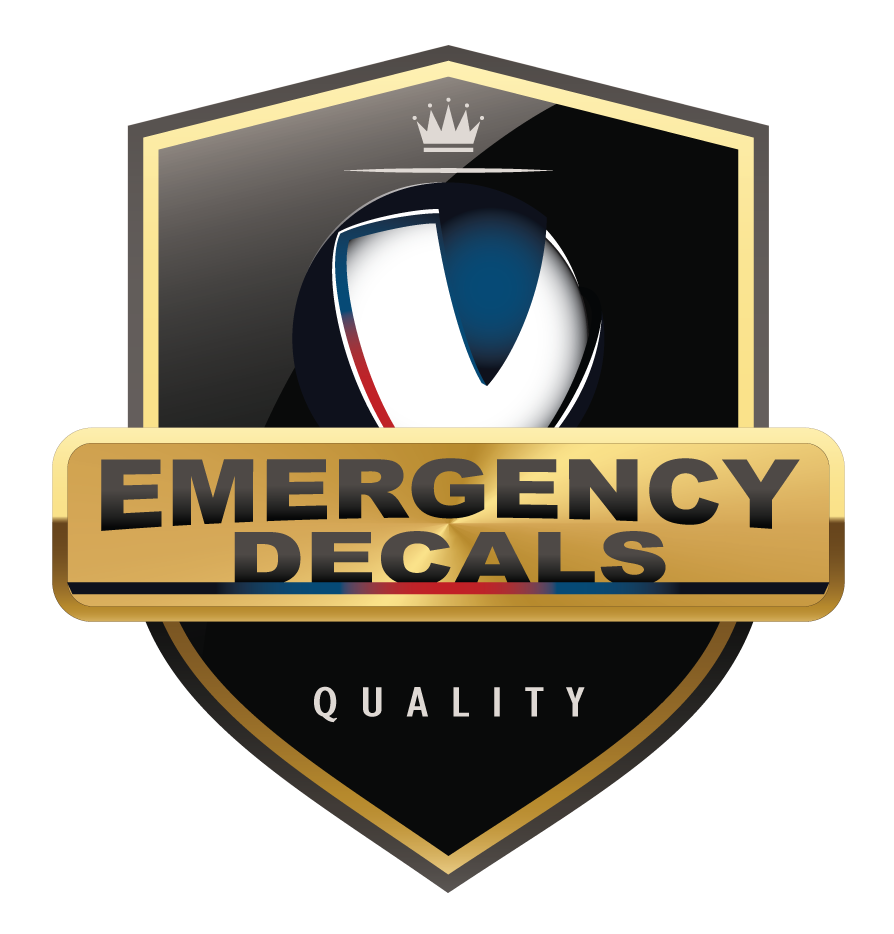Cognitive Visibility | Emergency Vehicle Safety
In today’s busy and fast paced environment, it’s not uncommon for the driver of a vehicle to become distracted. Whether they’re blaring their music, looking at their GPS, or talking/texting on their cell phone, they don’t always notice your sirens and flashing lights. The importance of getting other drivers to notice your vehicle is paramount to keeping everyone safe on the road. If you remember last month’s blog, we talked about using reflective ambulance graphics as a way of boosting vehicle visibility. Getting other drivers to notice your vehicle is a great start, but getting them to understand that you’re an emergency vehicle is the next step.
Vehicle recognition is a crucial aspect for keeping first responders safe and is often referred to as cognitive visibility. Relaying information about your vehicle while driving is the best way to signal your intentions to the drivers around you when responding to an emergency. At night, it can be difficult for drivers to recognize you as an ambulance instead of a van or truck if you’re not flashing your lights. In this case, they’re more likely to continue driving as they normally would instead of proceeding with caution or giving you a little extra space just to be safe. Here’s a few examples of ways you can update your emergency vehicle graphics to better let other drivers know who you are and what you do.
Rethink Your Color Scheme
You choice of color scheme/ design pattern probably makes the biggest difference when it comes to cognitive visibility. Choosing a recognizable color scheme can be a little tricky though because in some cases the traditional color schemes for emergency vehicles aren’t the best for vehicle visibility. Every little kid knows that fire trucks are red, but studies have shown that red is one of the hardest colors to notice on the road, especially at night. Research suggests a vibrant green or yellow is easier for people to notice in the dark or during weather with low visibility conditions.
Add Reflective Emergency Vehicle Stickers
Apart from color scheme choices you also need to consider stickers and logos. There’s a reason emergency vehicle decals are commonplace on our fire trucks and ambulances. It’s because not only do they add contrast to rest of the design scheme of your vehicle, but they also act as identifiers so that other drivers can distinguish you from non-emergency vehicles. Adding ambulance decals such as the “red cross” or the “star of life” logo, will instantly inform people that you are an ambulance and may be in the middle of an emergency. Drivers who see these universal signs will know exactly who you are and will consciously make safer driving decisions around you.
Outline Vehicle Edges
Passing information about what type of vehicle you are is great but you should also be aiming to transfer more basic information as well; information like your size, speed, and direction travel. A problem that often pops up with emergency vehicles at night is the loss of vehicle definition. Ambulances and firetrucks are larger and have a more unique shape compared to the typical vehicle. This makes it more likely for drivers to underestimate the full shape and size of your vehicle and could potentially cause an accident. To avoid this dilemma, it’s a good practice to add reflective striping and decals around the edges of your vehicle to outline the full shape so that other drivers aren’t caught off guard.
Even if you’re not comfortable with a complete overhaul of the design of your fleet, you should always be thinking about new safety trends. At Emergency Decals, our experienced design team will work with you to come up with a design that will keep true to your traditional style while incorporating some of the newer safety trends to boost your vehicle’s cognitive visibility. Even if it’s as simple as adding some new reflective emergency vehicle stickers and graphics, it can be instrumental in keeping you safe. Give us a call today to see what we can do to make your ambulance or other emergency vehicle stand out.
